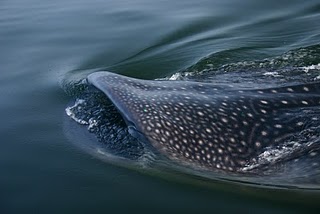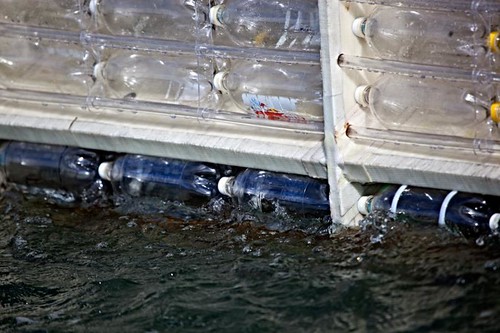Five of the biggest marine science stories in 2010
 Tuesday, December 28, 2010 at 9:24AM
Tuesday, December 28, 2010 at 9:24AM Yes, I caved to the impulse and joined the inevitable cavalcade of “lists” that come at the end of every year. Why? Because these lists actually serve an important purpose: they cement the events of the past 12 months in our psyche and provide context about where these events fit into the grand passage of time. They also give us something to read when we want to procrastinate shoveling snow off the driveway or vacuuming pine needles from behind the couch. So here they are: five of the biggest marine science news stories from 2010.
5. National Ocean Policy. Starting off sexy, right? Policy, yeeeahh baby! No really, it IS a big news story that in July of this year the Whitehouse announced that the US finally has a comprehensive Ocean Policy. That’s because such a document - and the institutions it enhrines - recognises the critical role that the oceans play in the lives of every American, even those that live far removed from the coasts. As the biggest per capita consumers (and polluters) on the planet, the absence of a national policy to protect the oceans had long been lamented by marine scientists and consrvationists alike. Now we have a National Oceans Council and a set of guiding principles for governing the use (and abuse) of coastal oceanic resources. Its about time! Read the Executive order here, and the Final Recomendations of the Ocean Policy Task Force here
4. What a load of garbage. 2010 marked the year that the concept of the “great ocean garbage patches” entered the public consciousness. If you’ve been living under a rock and have no idea what that is, well, it’s the idea that millions of tons of plastic pollution have found their way down urban drains, to creeks, rivers and estuaries and thence to the centers of the great circular oceanic currents called gyres. There becalmed, these floating fields of plastic debris form giant rafts of death, entering food webs and silently choking millions of animals. The truth is slightly less dramatic; while the grabage patches are almost mind bogglingly large, the density of plastic particles within the patches is actually pretty dilute. In fact, you have to sift a lot of water to recover appreciable quantities of the stuff; it’s just that, even then, they have vastly higher concentrations than parts of the ocean more well-mixed by large scale currents. 2010 was the year that scientists recognised that there is not only one patch (in the north Pacific) but probably a patch of sorts in the center of every gyre and that therefore this is a global problem. Its also the year that the concept hit pop culture, partly from the well-publicised efforts of the Plastiki cruise, but mostly in the form of a new album from progressive UK hip hop outfit Gorillaz called “Plastic Beach”, a theme album conceived when the lead singer was sitting on a beach and realising how much of the sand was actully composed of tiny bits of plastic. The garbage patch story also added the most excellent word “nurdle” to the lexicon, reason enough for it to appear on this list. Read more about the adventures of a bona fide garbage patch researcher by following Miriam Goldstein at DeepSeaNews
3. To hack, or not to hack? It’s pathetic, but perhaps not surprising, that the worlds leaders have not been able to agree on a binding plan of action to reduce carbon pollution and its two biggest impacts on the planet: global warming (both the atmosphere and the oceans) and ocean acidification. First at the COP15 Copenhagen conference in late 2009 and, more recently, at the 2010 United Nations Climate Change Conference in Cancun, Mexico in December, politics consistently trumped the urgent need to reconstruct our industries and economies to prevent exacerbation of the problem (we’re already committed to a certain level of globe-changing temperature and pH shift). While these “front end” solutions are desperately needed, a number of climate/ocean researchers around the world have been studying “back end” solution, the most familiar of which is carbon sequestration - the idea of catching CO2 from fossil fuel burning and burying it or otherwise preventing it from entering the atmosphere/ocean. Perhaps the most controversial suggestion is to fertilise the oceans with nutrients that usually limit the growth of plankton (Iron is the best-studied), thereby causing huge plankton blooms that suck CO2 out of the air/water and, ultimately, export it to the bottom of the abyssal oceans. The controversy of these sorts of planet-level solutions, collectively called “geo-hacking”, arise because they are designed to affect the whole earth ocean/climate system and take place in international waters, so arguments arise about who gets to decide on these sorts of things. No sooner had I interviewed an expert on ocean fertilisation on this very blog than a UN moratorium was issued preventing any future research on this kind of solution until the risks and impacts are better understood. C’mon UN - you can’t have it both ways: either make an internationally-binding decision about reducing carbon pollution, or allow people to move forward with alternative solutions, preferably both. As it stand currently, we’re a boxer with both arms tied behind his back, and that’s never good.
2. BP/Macondo/Deepwater Horizon Oil Spill. Bet you thought that would be number 1 right? By volume, the largest oil spill in US history, affecting huge areas of the Gulf of Mexico in the peak of seafood season and threatening hundreds of miles of fragile coastal wetlands, surely it should be. Nope. Why not? Well, largely because - disastrous though it was/is - it is both temporally and geographically restricted in its impact. In other words, its effects will be found primarily in one place and for a limited (albeit relatively prolonged) time. I argue that it is NOT these events that we (the world) need to be concerned about, but the long-term, chronic, death-by-a-thousand-cuts kind of problems. The biggest of those are global warming and ocean acidification (see number 3). It’s like the difference between a big financial windfall and the power of investment returns. The local factory worker who wins a hundred million on the latest Powerball gets the news story, while tons of investors accumulate vast wealth in relative silence due to the inexorable influence of compounding interest and capital gains over time. The BP spill was an absolute disaster that got a LOT of press and will keep many marine scientists and environmentalists busy for a long time (great coverage of both is at DeepSeaNews), but it’s a one-off event and not even on the radar in terms of the global health of the oceans.
1. Census of Marine Life. The biggest marine science news of 2010 has to be the completion of the first Census of Marine Life; a phenomenal decade-long effort by thousands of marine biologists around the world to answer one simple question: What lived, lives and will live in the worlds oceans? The brainchild of Rutgers marine scientist Fred Grassle, the scope was truly gargantuan: over 500 research expeditions covering every ocean, over 2,500 scientists and the discovery of over 6,000 species new to science and published in over 2600 peer-reviewed papers. It revealed the chronic undersampling of the deep-pelagic realm and the incredible diversity of seamounts and the tropical, arctic and antarctic depths. It also brought us some of the most stunning and engaging images of marine diversity ever captured. The final estimate? Based on extrapolations of survey data, easily 1 million or more eukaryote species and perhaps as many as 10 million bacteria and archaea. But CoML is so much more than numbers, it’s a peek into a treasure trove of new life, a testament to the phenomenal diversity of the oceans, and an enduring snapshot of the precious biological legacy we are lucky to be part of. It’s often said that you don’t know what you’ve got til it’s gone. Well, thanks to CoML we have a better idea of what a priceless gift of diversity we’ve got at our fingertips. Now what are we going to do about it?

I’d love to read your feedback in the comments. Did I miss anything?
 1 Comment |
1 Comment |  Email Article | tagged
Email Article | tagged  COP15,
COP15,  CoML,
CoML,  Copenhagen,
Copenhagen,  Policy,
Policy,  diversity,
diversity,  geo-hacking,
geo-hacking,  global warming,
global warming,  ocean acidifcation,
ocean acidifcation,  pollution,
pollution,  sSOFeX
sSOFeX 








